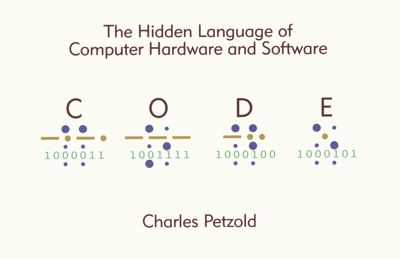

At the risk of a spoiler alert, he is also effectively introducing us to the action that transistors perform. To handle that, Petzold introduces the idea of a relay - something that takes a small, weak current and uses it to flip a switch in another circuit which can carry a bigger current. If you wanted to send messages across the US, you’d need to find a way to make the signal stronger every so many miles. One challenge with the telegraph is that the signal becomes weaker with distance. As Petzold notes "For the first time, people were able to communicate further than the eye could see or the ear could hear and faster than a horse could gallop." The telegraph also marks the beginning of modern communication. In the spirit of starting from the basics, Petzold also provides an introduction to electricity by introducing “the anatomy of a flashlight.” In doing so, he explains how electrons are moved through a circuit by a voltage, explaining what voltage, current, and resistance really mean.Īfter introducing both codes and electricity, Petzold examines the telegraph – a way to use electricity to transmit encoded information. And that’s something we’ll see a lot more of as the book progresses since most computers also use a binary code (with 1s and 0s) to represent information and instructions. That is, it’s composed of two values - dots and dashes - used in various combinations to represent all of the letters of the alphabet. In addition to being a good introduction to the idea of codes, morse is also useful because it is binary. The book starts off by going straight to the heart of the title – explaining “what is code.” Not, initially, a series of steps describing operations that you’d like a computer to perform, but rather the very simplest codes like morse code - a system for transferring information between people and/or machines.


In “ Code: The Hidden Language of Computer Hardware and Software,” Petzold takes us from morse code to the early microprocessors of the 70’s and 80’s, providing a deep and satisfying explanation of exactly how computers function. The answer, according to Charles Petzold, is to go back in history to build an understanding of the foundational concepts, slowly moving from the telegraph equipment of the 19th century to the graphical user interfaces of the 1980s. Because computers are so complicated these days, it can be hard to figure out where to start.

Whether you want to become a software engineer, or just better understand the technologies that power our world, there’s real value in learning how computers actually work.


 0 kommentar(er)
0 kommentar(er)
